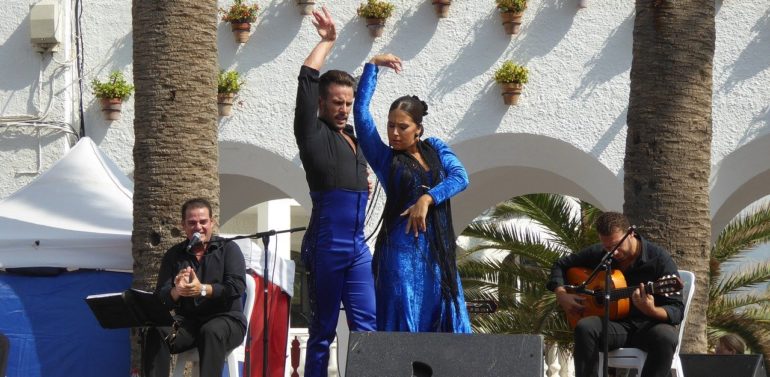
The foot tapping or the furious passion is what characterises the flamenco dance. This dance is the third part of the flamenco art, and has a historical background with the development of the Spanish culture.
Its origins can be found in the marginalised villages of southern Spain. Both the dance and the music had an ancient influence from the Greeks and Romans. Later, it was influenced by Arab, Jewish and even Hindu culture. With the arrival of Muslims and Jews to the Iberian Peninsula, the already flourishing music and dance that developed in Andalusia drew characteristics from these cultures.
Therefore, today’s flamenco dance and music are the result of centuries of influence and unification of multicultural elements. With the flourishing development of flamenco music also came the rapid evolution of the dance, appearing for the first time in a structured and recognisable form in the 18th century.
The passionate dancers impressed the public in the musical cafés of the time – the so-called ‘cafés cantantes’. They quickly began to steal the limelight from the singers. After centuries of cultural fusion, the art that was born in caves as a form of expression of the gypsy ethnic group and other oppressed cultures, has evolved remarkably. The result is a fusion of flamenco song and dance that has seduced the whole world.
Depending on the emotional criteria, melodic phrases and traditions behind each flamenco song, the dance manifests itself in more than fifty different forms. Both flamenco dance and flamenco music include a strong personal improvisation. The dance takes shape through spontaneous expressions of the dancer’s emotions at each moment.


